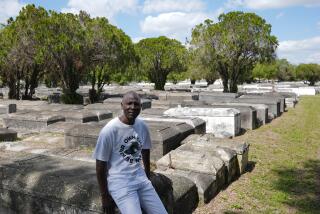As war’s toll grows in Kabul, the dead fight for space with the living

The cemetery sits atop a hill, where the rugged walls of an ancient fortress partially surround nearly 250 acres of gravestones. Below, in a valley, is Old Kabul, the center of an expanding city of 5 million people.
Death is all too familiar here — in January alone, at least 174 people were killed in attacks in Kabul, the Afghan capital. But an odd thing has happened at Shuhada-e-Saliheen, the city’s largest and perhaps oldest cemetery. As more people arrive from increasingly unsafe provinces in search of security and jobs, land has become so scarce that people have built houses in the cemetery. The dead, meanwhile, are turned away — there is no more room for them.
In Kabul, the dead must now fight for space with the living.
For about a decade, people from different provinces have come to live in the cemetery. About three years ago, houses started appearing on the cemetery’s western hillside, said Haji Niaz Muhammad, the caretaker of a shrine that sits at the southern end. He said the land was seized illegally by powerful people from northern Afghanistan who built houses for compatriots from their own provinces.
“There isn’t enough space for houses or cemeteries in Kabul anymore,” he said, shaking his head as birds chirped in the trees outside the shrine. “It is regrettable.”
Nearby, some families have set up makeshift houses between the graves. Next to the resting place of a famous singer, Ahmad Zahir, a man in his 50s named Noor Agha served tea spiced with cardamom in front of his small tent. He has lived in the cemetery with his seven children since the U.S.-led invasion that ousted the Taliban government in 2001.
“When I first came here there were no houses in this area,” said Agha, a Kabul native. “But now many people from different parts of the country have arrived.”
Every day, he draws a colorful crowd: people visiting graves, child beggars who live in the cemetery and wandering malangs, or followers of mystical Islam, who stop by with their pet cats.
“They have nowhere else to live, there is no land left for them,” Agha said, referring to those who have built houses in the cemetery. “Or they came because of war — their houses were burned down or taken in the provinces.”

Roya Said Omar, 31, walks up and down the steep hill every day to and from her job as a police officer at Pul-e-Charkhi prison. She has lived in the cemetery for five years as one of her husband’s two wives, along with his three children, one of them hers.
Omar said they left the eastern province of Nuristan and moved to a neighborhood in Kabul because of violence by Taliban insurgents, who later killed her brother. They moved to the cemetery when the rent got too expensive.
Her 60-year-old mother, Shah Begum, arrived in Kabul three months ago to seek treatment for her disfigured hand, which was pierced by a Taliban bullet 10 years ago. Reminded of her son’s death, tears welled in her eyes.
“He was a policeman,” she said. “He worked at the Supreme Court in Kabul but he had come to Nuristan for vacation. They shot him dead because he worked for the government.”
Below Omar’s home but still in the cemetery, a mason lays bricks for a new house next to a police checkpoint. Down below the hills, next to the graves, small children run and try to fly kites.
One of them, 11-year-old Pari, was a beggar who lived on the western hillside, inhabited mainly by people from the northern province of Panjshir. She led the way, hopping over rocks on a slick and dusty path up the steep hill.
Pari’s father, Abdul Saboor, 48, brought his family of eight here three years ago after their land in another part of Kabul was seized. Saboor, who is unemployed, built their one-room house from stones. When it rains, water leaks through the roof.
“When I was building the house, people from the police and the municipality came to demolish it,” he said. “But I rebuilt it.”
Fahim Jahesh, deputy of the local council that oversees the cemetery, said city authorities planned to grant temporary landownership papers to the cemetery’s living residents but so far nothing has happened. Despite the ongoing construction, he said, building new houses remains prohibited.
Ahmadzai Ahmadi, who is responsible for cemeteries and mosques in the Ministry of Religious Affairs, said the government has been trying to acquire more land for graveyards outside the city but has run into opposition from “land mafias” — criminal networks that seize property illegally, sometimes by force.
“We are in the process of building walls around these areas so they aren’t captured,” Ahmadi said.
Eight years ago, on the other side of the city, a dispute broke out over a cemetery used by ethnic Hazaras in a neighborhood known as Dasht-e-Barchi. A group of Kuchi nomads, viewing the area as ancestral lands, set up tents close to the cemetery and clashed with the rival Hazaras, leading to dozens of casualties.
Authorities ordered the nomads to leave the area, but tensions flared again six years later. In July 2016, after a Hazara protest was attacked by a suicide bomber, killing at least 80 people and wounding hundreds, Hazara leaders brought victims to be buried in a new cemetery in Dasht-e-Barchi. Some Kuchis returned to protest, but eventually agreed that the area could be used for a cemetery.
There, the dead won out. But in Shuhada-e-Saliheen, new houses keep popping up closer and closer to the graves. As the sun set behind the hills, Pari and the other children headed home, past the fences demarcating the territory of the dead. They yelled goodbye to Noor Agha, who was sitting in front of his samovar steaming with tea, preparing for another night between the graves.
Liuhto is a special correspondent.
More to Read
Sign up for Essential California
The most important California stories and recommendations in your inbox every morning.
You may occasionally receive promotional content from the Los Angeles Times.










